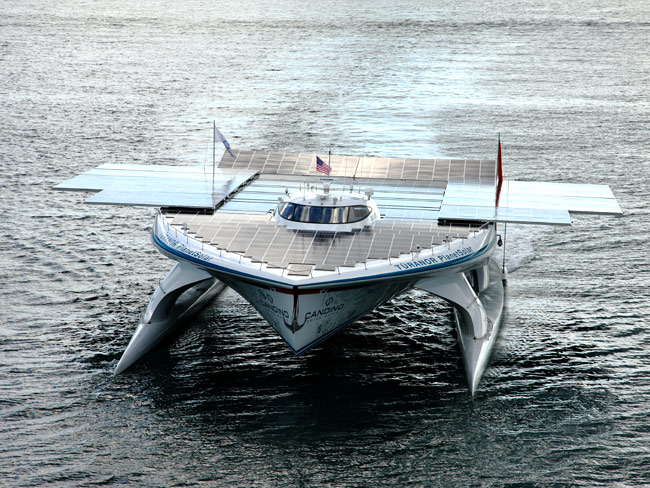Solar power has made some impressive strides — and headlines — this year. This summer, a solar-powered plane safely flew across the country in gradual legs, starting in California and wrapping up in New York. Now, solar powered means of transportation are making a splash as well, with boats like the MS Turanor Planet Solar garnering worldwide attention. The sailboat, which is currently the largest solar-powered boat in the word, recently completed a scientific cross-Atlantic trip, as reported by CNN and several other media outlets.

In real life and on paper, the MS Turanor makes an impressive figure. The boat weighs 60 tons, has a length of 35 meters, and is worth $16 million. The giant vessel is powered by a total of 60 solar panels. These panels cover more than 500 square meters of the boat's deck, which expands to accommodate the panels. The boat's successful journey across the Atlantic to London should help convince detractors that solar power is reliable. If not, the captain of the MS Turanor has stated in interviews that a full battery will propel the boat for an impressive 72 hours without any charging from the sun.
This is not the first time that the MS Turanor has made headlines in various countries. In 2012, the vessel became the first solar-powered boat to circle the world, which was another impressive feat that demonstrated that solar is not an exaggerated or temporary fad. Earlier this year, the MS Turanor broke the record it had previously held for the fastest crossing of the Atlantic. The old record was 26 days, while the new one was 22 days. The impressive performances of the MS Turanor over the last year show that solar power isn't just a solution for powering buildings — it truly can power all kinds of vessels used for transportation, work, or recreation.
Privately owned solar powered boats are still a bit of a dream for boating enthusiasts and supporters of solar power. However, there is a growing interest in these boats, and there are more of them on the water than there were a few years ago. In August of this year, a solar-powered boat with a four-person crew traveled from Florida up to New York. Much further south, meanwhile, the World Wildlife Foundation has collaborated with Galapagos National Park to produce a solar-powered boat, which currently serves as a public educational tool at the park. Boats like this may become a much more common sight in the next several years.
The interest in these eco-friendly alternatives is clearly growing. In the past, people may have been wary of stranding themselves at sea with a power source that they didn't view as reliable. However, the records set by the MS Turanor, not to mention the boat's ability to power itself for three days without sun, speaks to the fact that solar technology has made serious progress in recent years. Although there is certainly room for improvement, as in any relatively new technology, solar power is far from the unreliable, unpredictable power source that critics like to cast it as. It may not be surprising if, in addition to solar-powered homes and commercial businesses, solar-powered boats are also on their way to becoming a common and accepted sight.


0 comments:
Post a Comment